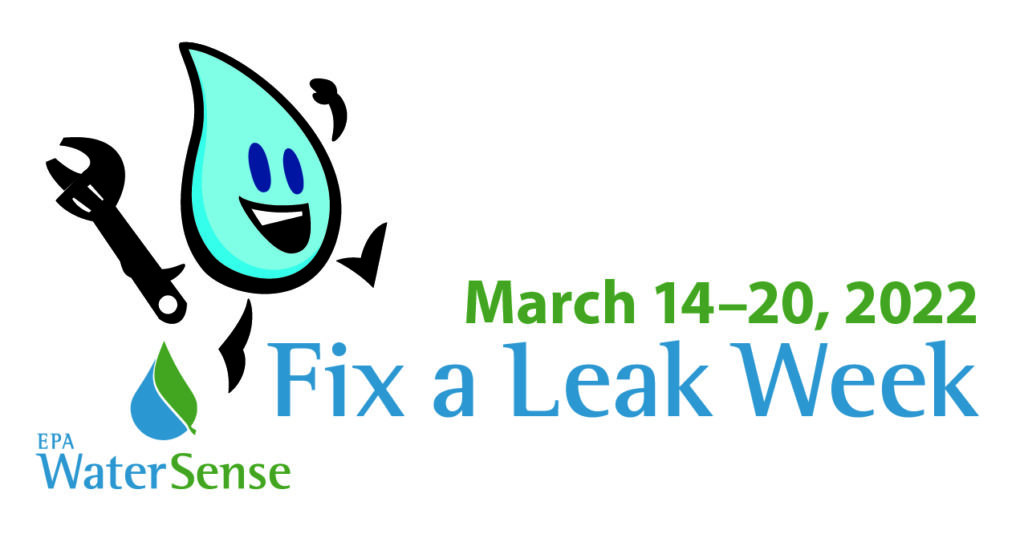Leaks Can Run, But They Can’t Hide — It’s Fix a Leak Week!
 March 14, 2022
March 14, 2022
Ever have one of those nights where you’re lying in bed, sleepless, and seem to hear every sound in the house — including that dripping bathroom faucet?
Well, here’s something else to keep you up at night: Each dripping faucet in your home can waste about 3,000 gallons of water a year. And if you have a leaky toilet, that’s really the stuff of nightmares — it can waste up to 200 gallons of water every day!
Now for the good news: It’s not hard to fix those drips — and as part of the EPA’s 14th annual Fix a Leak Week (March 14-20), we’re going to show you how.
An Expensive Problem
The EPA says the average household’s leaks account for about 10,000 wasted gallons of water every year. That’s enough for about 270 loads of laundry. Ten percent of homes have leaks that waste 90 gallons or more per day — or almost 30,000 gallons a year. That’s a lot of wasted water (and money).

In fact, household leaks can waste nearly 1 trillion gallons of water annually nationwide, so each year we encourage everyone to hunt down the drips during Fix a Leak Week.
“Toilets are a common culprit when it comes to household leaks, and an old, floppy flapper in the tank that no longer seals properly can allow water to leak 24-hours-a-day, which can really add up,” says Susan L. Sampson, LCA’s communications manager.
Simple Solutions
The good news is, it’s usually simple to fix leaks. Better yet, the fixes will pay for themselves in savings. Not sure if you’re losing water, or where a leak is coming from? Here are some helpful tips from the EPA:
- Take a look at your water usage during a colder month, such as January or February. If a family of four exceeds 12,000 gallons per month, there are serious leaks. “It is important to monitor average water consumption, which is shown on your quarterly billing statement,” Sampson says. “Look for sudden spikes in water consumption and bill amount due. Most likely, when this happens, a leak is lurking.”
- Check your water meter before and after a two-hour period when no water is used. If the meter changes at all, you probably have a leak.
- Identify toilet leaks by placing a drop of food coloring in the toilet tank. If any color shows up in the bowl after 10 minutes, you have a leak. (Be sure to flush immediately after the experiment to avoid staining the tank.)
- Examine faucet gaskets and pipe fittings for any water on the outside of the pipe to check for surface leaks.
Out With The Old

One last point: Even if an older faucet, toilet or shower isn’t leaking, consider replacing it with an EPA-approved WaterSense product. You’ll start conserving water immediately, and will save money in the long run.
Ready to get started fixing leaks around the house? Click here for a handy, downloadable checklist. And for even more tips and tricks on finding — and repairing — water woes around the house, check out the EPA’s Fix A Leak Week website.
“We encourage customers to make looking for leaks a habit. Do a thorough check to look and listen for leaks, although some are silent. It’s better not to wait until your bill spikes because for most leaks, the water has passed through the meter and is therefore volume for which you will be billed,” Sampson says.